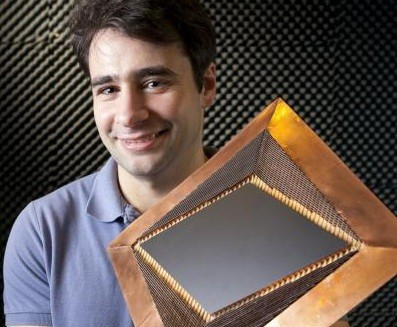Harry Potter’s Invisibility Cloak Real?

Harry Potter's Cloak of Invisibility that hid him from Muggles and wizards alike may one day be a real thing.
Engineers at Duke University have developed the first functional 'cloaking' device, which is able to guide the electromagnetic waves around an object and then re-emerge on the other side, effectively hiding the object.
Clothes that render the wearer invisible have existed in mythology long before J K Rowling wrote Harry Potter. Greek god of the underworld Hades was given an invisibility helmet by Cyclopes to help him in the battle against the Titans.
The electrical engineers first created a functional cloaking device in 2006 but it was not perfected. The new design fixes the problems from the original device.
The goal of this type of research involves "taming light", with the team creating meta-materials, which are man-made objects that have properties absent in natural ones.
Structures that incorporate these metamaterials can be designed to guide electromagnetic waves around an object, and then reform on the other side, as if they had passed through an empty volume of space.
Nathan Landy, who worked on the project, said: "One issue, which we were fully aware of, was loss of the waves due to reflections at the boundaries of the device.
"In order to create the first cloaks, many approximations had to be made in order to fabricate the intricate meta-materials used in the device."

He said that the reflections were like those seen on clear glass; while the viewer can see through the glass, they are aware it is there. "Since the goal was to demonstrate the basic principles of cloaking, we didn't worry about these reflections," Landy said.
This problem has now been resolved through the use of a new fabrication strategy. The new cloak has copper strips that create a more complicated material. The copper strips are better positioned to meet their mirror image.
"Each quadrant of the cloak tended to have voids, or blind spots, at their intersections and corners with each other. After many calculations, we thought we could correct this situation by shifting each strip so that it met its mirror image at each interface.
"We built the cloak, and it worked. It split light into two waves which travelled around an object in the centre and re-emerged as the single wave with minimal loss due to reflections."
The engineers now plan to try to use their research to create a three dimensional cloak.
© Copyright IBTimes 2025. All rights reserved.






















